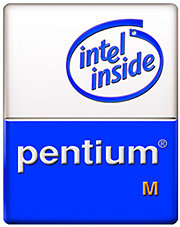|
Vulcan FlipStart
The Vulcan FlipStart was a super compact PC, weighing 1.5 pounds (with standard high capacity battery) and the size of a paperback novel (4.5 by 5.9 by 1.6 inches with high capacity battery). FlipStart was the release name for the concept PC Paul Allen showed at CES 2003 and 2004, specifically FlipStart V1.0. The original concept name was Mini-PC. Its main competition at the time of release was the OQO Model 02. OQO had released the Model 01 at the time the FlipStart was announced 4 years earlier. They were both equipped with QWERTY keyboards and wireless capabilities but the FlipStart was a clamshell (flipped open) versus the OQO which slid up to reveal the keyboard. Specifications The FlipStart has a folding 5.9-inch screen with 1024×700 resolution, a 30GB hard drive, built-in Wi-Fi, Bluetooth and batteries capable of running one to three hours on a charge, with extended battery life offering up to four hours. The CPU is a Pentium M ULV processor running at 1.1 ... [...More Info...] [...Related Items...] OR: [Wikipedia] [Google] [Baidu] |
Living Computer Museum
Living Computers: Museum + Labs (LCM+L) is a computer and technology museum located in the SoDo neighborhood of Seattle, Washington. LCM+L showcases vintage computers which provide interactive sessions, either through time-sharing operating systems or single-user interfaces. This gives users a chance to actually use the computers online or in-person in the museum. An expansion adds direct touch experiences with contemporary technologies such as self-driving cars, the internet of things, big data, and robotics. This puts today's computer technology in the context of how it's being used to tackle real-world issues. LCM+L also hosts a wide range of educational programs and events in their state-of-the art classroom and lab spaces. According to an archived version of LCM's website, their goal is "to breathe life back into our machines so the public can experience what it was like to see them, hear them, and interact with them. We make our systems accessible by allowing people to come ... [...More Info...] [...Related Items...] OR: [Wikipedia] [Google] [Baidu] |
Pentium M
The Pentium M is a family of mobile 32-bit single-core x86 microprocessors (with the modified Intel P6 microarchitecture) introduced in March 2003 and forming a part of the Intel Carmel notebook platform under the then new Centrino brand. The ''Pentium M'' processors had a maximum thermal design power (TDP) of 5–27 W depending on the model, and were intended for use in laptops (thus the "M" suffix standing for ''mobile''). They evolved from the core of the last Pentium III–branded CPU by adding the front-side bus (FSB) interface of Pentium 4, an improved instruction decoding and issuing front end, improved branch prediction, SSE2 support, and a much larger cache. The first Pentium M–branded CPU, code-named Banias, was followed by Dothan. The Pentium M line was removed from the official price lists in July 2009, when the Pentium M-branded processors were succeeded by the Core-branded dual-core mobile Yonah CPU with a modified microarchitecture. It replaced the Mobile Penti ... [...More Info...] [...Related Items...] OR: [Wikipedia] [Google] [Baidu] |
Ethernet
Ethernet () is a family of wired computer networking technologies commonly used in local area networks (LAN), metropolitan area networks (MAN) and wide area networks (WAN). It was commercially introduced in 1980 and first standardized in 1983 as IEEE 802.3. Ethernet has since been refined to support higher bit rates, a greater number of nodes, and longer link distances, but retains much backward compatibility. Over time, Ethernet has largely replaced competing wired LAN technologies such as Token Ring, FDDI and ARCNET. The original 10BASE5 Ethernet uses coaxial cable as a shared medium, while the newer Ethernet variants use twisted pair and fiber optic links in conjunction with switches. Over the course of its history, Ethernet data transfer rates have been increased from the original to the latest , with rates up to under development. The Ethernet standards include several wiring and signaling variants of the OSI physical layer. Systems communicating over Ethernet ... [...More Info...] [...Related Items...] OR: [Wikipedia] [Google] [Baidu] |
Windows SideShow
Windows SideShow (codenamed Auxiliary Display) was a feature by Microsoft introduced in Windows Vista to supply information such as e-mail, instant messages, and RSS feeds from a personal computer to a local or remote peripheral device or display. SideShow was intended to enhance the Windows experience by enabling new mobility scenarios for the Windows platform and by providing power saving benefits as part of Microsoft's broader efforts regarding a mobile initiative. SideShow was unveiled in 2003 as a feature of Windows Vista ("Longhorn") to provide peripheral awareness of information. Preliminary documentation from Microsoft focused on using it to provide online information in an internal display of a mobile device such as a laptop while supporting desktop computer scenarios; information could also be cached for later use when offline or when in sleep mode. Microsoft planned to include a Control Panel applet and configurable battery, calendar, email, wireless network, and Win ... [...More Info...] [...Related Items...] OR: [Wikipedia] [Google] [Baidu] |
Microsoft Office
Microsoft Office, or simply Office, is the former name of a family of client software, server software, and services developed by Microsoft. It was first announced by Bill Gates on August 1, 1988, at COMDEX in Las Vegas. Initially a marketing term for an office suite (bundled set of productivity applications), the first version of Office contained Microsoft Word, Microsoft Excel, and Microsoft PowerPoint. Over the years, Office applications have grown substantially closer with shared features such as a common spell checker, Object Linking and Embedding data integration and Visual Basic for Applications scripting language. Microsoft also positions Office as a development platform for line-of-business software under the Office Business Applications brand. It contains a word processor (Word), a spreadsheet program (Excel) and a presentation program (PowerPoint), an email client (Outlook), a database management system (Access), and a desktop publishing app (Publisher). Office ... [...More Info...] [...Related Items...] OR: [Wikipedia] [Google] [Baidu] |



